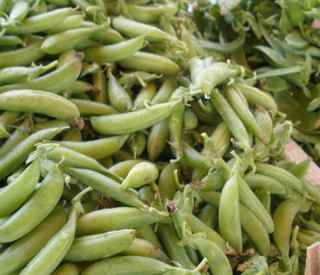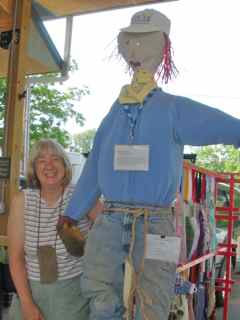In recent days and weeks, there is much in the news about an unfortunate E. coli outbreak in Europe; over the years there have also been E. coli outbreaks here in the USA. E. coli are a bacteria that live in the guts of humans and animals. Unsafe hygiene practices, both on farms with the handling of animals and at home in the kitchen, may allow introduction of E. coli (or any other infectious bacteria) into the food chain.
E. coli and other pathogens can get into both meats and vegetables, especially those that are mixed together with large amounts of different products in distribution centers and processing plants. Buying local foods may help you reduce the risk, since it usually involves smaller scales and allows you to know the person providing you your food.
But wherever you shop, the bottom line is that home food safety is crucial to avoiding E. coli and other pathogens. And it’s important to practice good food handling every day, whether there is an alert or not.
The following tips can help you avoid food-borne illnesses:
1. Wash your hands thoroughly before preparing OR eating food. This is the most effective means of preventing any food-borne illness. Wash for 20 seconds or sing “Happy Birthday to You”.
2. Wash all fruits and vegetables, and be sure to remove damaged or dead parts such as wilted and the brown edges on lettuce and greens. Wash fruits and vegetables even after they have been peeled. Using soaps or detergents is not recommended.
3. Scrub firm produce, such as cucumbers, squash and all melons, with a clean produce brush.
4. Dry washed produce with a clean towel or paper towel, or use a spinner to be sure they are dry.
5. Avoid unpasteurized juices, and if you make your own, use only fruit off the trees; fruit from the ground may be bruised and may have E. coli bacteria.
6. When buying fresh-cut produce such as watermelon or cantaloupe halves, they need to be sold refrigerated or surrounded by ice.
7. Ensure fresh fruits and vegetables are bagged separately from meat, poultry and seafood to prevent cross-contamination. It is a good practice to wipe out re-usable grocery bags with a dilute solution of bleach water to prevent contamination.
8. Children, the elderly and people with chronic illnesses should not eat raw sprouts.
9. Always fully cook hamburger or other ground meats to an internal temperature of 165°F.
10. Keep hot foods hot (above 135°F)…and keep cold foods cold (below 40°F).
11. Wash cutting boards, utensils and countertops with hot soapy water between preparation of meat and raw produce, to prevent cross-contamination.
12. If anything is questionable…throw it out.
Additional safe guards to prevent food-borne illnesses regarding hand washing:
• When you come in from being in the garden or your hands are dirty, DO NOT USE THE KITCHEN SINK TO WASH and CLEAN UP. This may be a source of cross-contamination. Wash your hands in another sink area, either rinse off outside, use a bathroom sink, a laundry tub or other non-kitchen area.
• Wash hands and the lower arm area vigorously with soap and warm-to-hot water. Use a small hand brush, to get under the fingernails. Dry hands with a clean towel, for restaurants, a one-time towel use policy is in effect; paper towels are acceptable.
• In the home kitchen, consider having TWO towels available, one for drying dishes and other “clean” needs and a second towel to dry hands. In my personal kitchen, the clean-use towel is a linen tea-towel; the hand drying towel is terry-cloth, so there is no mistake which towel to pick up.
Remember C-S-C-C:
Clean hands, food contact surfaces, and the fruits and vegetables you are working with.
Separate raw, cooked and ready-to-eat- foods while shopping, storing and preparing food (avoid cross-contamination).
Cook foods to a safe temperature.
Chill (refrigerate) perishable foods promptly, usually under 40°F.
Penelope Ferguson RD
Nutrition of the Shenandoah
Certified ServSafe Instructor®
©June 2011
Read Full Post »









 Steve Fischer of The WoodArt Studio lives in Mount Solon with his wife, Debbie (whom you will usually see at the Markets). He brings a unique touch to wooden crafts, creating beautiful and yet functional pieces from various types of wood–such woods as ailanthus, box elder, cherry, ebony, mahogany, poplar and walnut to name a few. With careful attention to each piece of wood, and a strong concern for his customers, Steve provides a remarkable, high-quality product at every Market. You can find them online at
Steve Fischer of The WoodArt Studio lives in Mount Solon with his wife, Debbie (whom you will usually see at the Markets). He brings a unique touch to wooden crafts, creating beautiful and yet functional pieces from various types of wood–such woods as ailanthus, box elder, cherry, ebony, mahogany, poplar and walnut to name a few. With careful attention to each piece of wood, and a strong concern for his customers, Steve provides a remarkable, high-quality product at every Market. You can find them online at 





